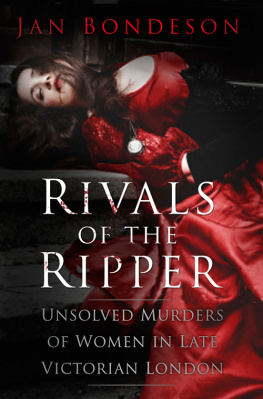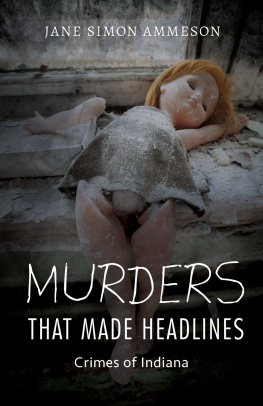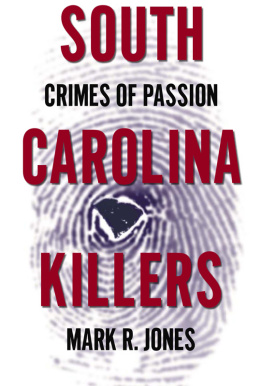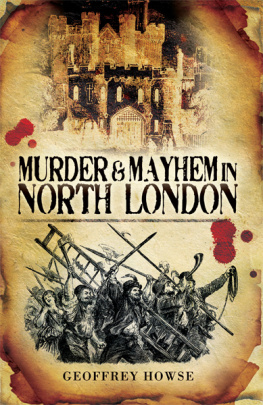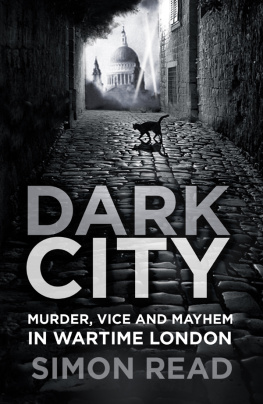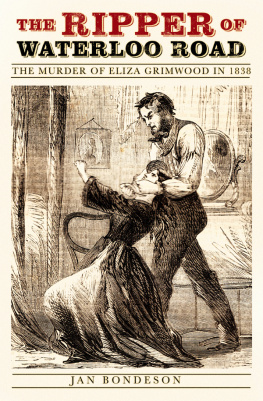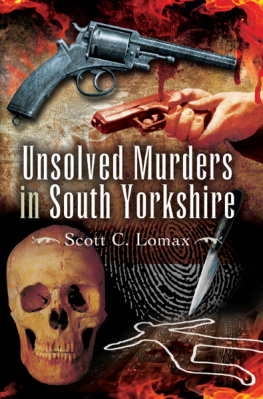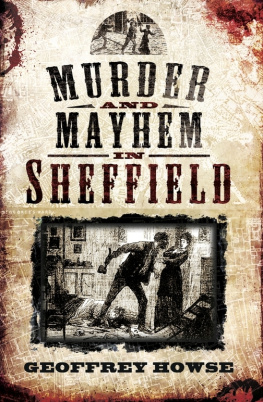PRAISE FOR JAN BONDESONS
MURDER HOUSES OF LONDON:
A gripping tour of Londons bloodiest buildings, the particulars of which have been meticulously researched and entertainingly presented.
Adam Wood, Editor of Ripperologist
I cannot recommend this book highly enough. It is a definite must-have.
Stewart P. Evans
Jan Bondeson conducts us on a masterly mystery tour of Londons black plaque houses, where murder has left a bloodstained visiting card Wherever Dr Bondeson shines his torch into dark places, he sheds new light with the application of his powerful logic.
Richard Whittington-Egan
Jan Bondeson can be guaranteed to tell bizarre and quirky real-life tales and to find stories that were thought to be unfindable.
Paul Begg
Jan Bondeson delves into the clandestine corners of city life to reveal stories that would probably have preferred to have been left undiscovered. Youll never look at the closed doors of London the same way again. A catalogue of crime covering more than two centuries, Murder Houses of London combined relentless research with splendid story-telling to produce a book of unrivalled interestingness.
James Harkin, Head Researcher at QI
Houses of Death: Chilling tales from behind the doors of homes that were the scene of gruesome murders over the last 200 years.
Daily Mail
This magnificent volume is a treasure-house of information on the murders and murderers of London.
Books Monthly
The chilling details are revealed in a new book identifying Londons so-called murder houses homes which have witnessed terrible crimes and still stand today and telling their grisly stories. Crime history writer Jan Bondeson a consultant doctor in his day job spent 15 years researching and writing his book, Murder Houses of London.
Hampstead and Highgate Gazette
If you were choosing a city to star as a crime story character, London would be front and centre. Bondeson delves into the many dark corners of the citys history to catalogue the crimes that have occurred everywhere from its narrowest and darkest streets to the stateliest mansions, providing a peek behind its bloodiest closed doors for over two centuries.
All About History
Everyone is acquainted with the grisly facts of Jack the Ripper but there are so many other stories to tell of murder and mystery in London. Jan Bondeson delves into these chilling tales, illustrating that you can never really know what goes on behind closed doors.
Discover Your History
Every house has a history of some kind but few are as bloodthirsty as these dwellings where behind fresh paint, clean windows and grand entrances lie grisly tales of murder.
True Detective
There is more, much more, and although the East End can lay its claim to be a starting point for lurid Victorian murders, Bondeson exhaustively details the grisly history of the rest of London too. So grab the book, grab an A-Z (or actually just tap Googlemaps into your smartphone) and go hunting for Londons gruesome past.
East End Life
Jan Bondeson is a curious author and I must confess that I approached this book with a mix of apprehension and excitement there is a fascinating discussion to be had here about murders and dark tourism.
London Journal
I once said that Jan Bondeson is incapable of writing a bad book. Murder Houses of London once again proves that statement correct it packs a lot of information into 350 densely printed and liberally illustrated pages. If only walls could talk, what tales they would have to tell. Fortunately we have Jan Bondeson to tell the tales for them. An excellent book, highly readable.
Ripperologist
The work contains compelling details not only of famous crimes, but also of homicides ranging from the obscure to the long-forgotten.
Ripperana

Copyright 2015 Jan Bondeson
The moral right of the author has been asserted.
Apart from any fair dealing for the purposes of research or private study, or criticism or review, as permitted under the Copyright, Designs and Patents Act 1988, this publication may only be reproduced, stored or transmitted, in any form or by any means, with the prior permission in writing of the publishers, or in the case of reprographic reproduction in accordance with the terms of licences issued by the Copyright Licensing Agency. Enquiries concerning reproduction outside those terms should be sent to the publishers.
Matador
9 Priory Business Park,
Wistow Road, Kibworth Beauchamp,
Leicestershire LE8 0RX
Tel: (+44) 116 279 2299
Email:
Web: www.troubador.co.uk/matador
ISBN 978 1784629 755
British Library Cataloguing in Publication Data.
A catalogue record for this book is available from the British Library.
Matador is an imprint of Troubador Publishing Ltd
CONTENTS
INTRODUCTION
It might be only on enchanted ground;
It might be merely by a thoughts expansion;
But in the spirit, or the flesh, I found
An old deserted Mansion.
A residence for woman, child, and man,
A dwelling-place, and yet no habitation;
A House, but under some prodigious ban
Of excommunication.
All epigraphs in this book are from
Thomas Hood, The Haunted House.
This book is the second volume of my comprehensive account of Londons topography of capital crime: houses inside which celebrated murders have been committed. Since there is no shortage of London murder houses, this volume will deal with Southwark, Lambeth, Wandsworth and all suburbs south of the river. For a crime to qualify as a murder, it has to have been classified as such at some stage of its investigation or prosecution, although it does not matter what the ultimate verdict was, or whether the crime was solved or not. For a house to qualify as a murder house, the murder must have been committed inside its walls, not out in the street or in the garden. Moreover, the building in question must survive relatively intact. A Victorian or Edwardian murder house keeps its status after being subdivided into flats, but no murder flats in tower blocks and other ungainly modern developments are included in this book.
Deaths after botched illegal abortions were formerly classed as murders, but they have no business to be in this book. Nor will there be any sad tales of desperate families turning on the taps and gassing themselves. Interesting or unsolved murders have been preferred to simple slayings, and I have not felt it worthwhile to include a profusion of cases of insane women murdering their babies [there are many], or similar-sounding instances of drunken husbands murdering their wives [there are very many]. Only a few modern murders have been included, and I have avoided the activities of the present-day gangsters and mindless hoodlums, to concentrate on older murders that are of interest from a social history point of view. Moreover, I have tended to follow what the distinguished crime historian Jonathan Goodman used to call his forty-year rule: after that period of time, a murder lost its horror and squalidity, and instead gained some degree of historical interest.
There does not appear to be any London murder houses that are relics to crimes perpetrated prior to 1800. But the late Georgian and Victorian builders knew their trade: they were able to produce quality houses that would stand for centuries to come. Even the houses intended for the poor were built to last, as evidenced by many of the humble South London terraces surviving to this day, in good order. The historic murder houses of London have faced a trinity of enemies: Decay, the Luftwaffe and the Developer. Clearances of low-quality slum tenements have deprived London of a fair few murder houses. Mr Hitlers concerted effort to rearrange Londons architecture meant that his Luftwaffe destroyed many a murder house, not only in the East End, but all over the Metropolis. The Developer has accounted for even more of them, with hideous modern blocks of flats replacing much of the traditional fabric of old London.
Next page

